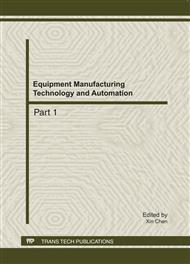p.1594
p.1598
p.1603
p.1609
p.1614
p.1621
p.1627
p.1631
p.1635
The Research of Strengthening Mechanism on Ferritic Stainless Steel Under Impact Processing
Abstract:
This paper mainly studies the microstructure and strengthening mechanism of ferritic stainless under laser shock. the mechanical properties and microstructure were observed through the X-ray diffraction and TEM. The results showed that laser induced shock wave peak pressure is higher than the yield strength of stainless steel, the plastic deformation occus under the impact of the role of stress and high strain rate. when the laser power increases, ferritic stainless steel will have an obvious phase transition from the body-centered cubic into hexagonal system.
Info:
Periodical:
Pages:
1614-1617
Citation:
Online since:
August 2011
Authors:
Price:
Сopyright:
© 2011 Trans Tech Publications Ltd. All Rights Reserved
Share:
Citation:


